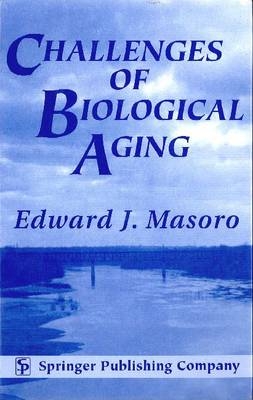
Challenges of Biological Aging
Seiten
1999
Springer Publishing Co Inc (Verlag)
978-0-8261-1277-4 (ISBN)
Springer Publishing Co Inc (Verlag)
978-0-8261-1277-4 (ISBN)
- Titel ist leider vergriffen;
keine Neuauflage - Artikel merken
Provides the non-biologist an overview of what is known about the physiological bases of aging. This book examines the basic theories and hypotheses underlying the molecular, cellular, and systemic processes involved in senescence. It is useful for students training to become gerontologists as well as biologists not conversant in the aging field.
This volume provides the non-biologist an overview of what is known about the physiological bases of aging. The author examines the many basic theories and emerging hypotheses underlying the molecular, cellular, and systemic processes involved in senescence. He addresses the normal physiological changes that characterize the aging phenotype, and also considers the role of many age-associated diseases in growing older. Masoro synthesizes a much-needed ""unified theory"" of biological aging to which explains how and why the body grows into the condition we call ""old."" This text is intended for gerontology students in training, as well as for human physiologists interested in gerontology. What is the biological basis of aging? Why does aging occur? This volume will provide the reader with an overview of what we know about the biology of aging. In a clearly written and accessible style, the author examines the many theories and hypotheses underlying the molecular, cellular, and systemic processes involved in growing older. Also considered are the many age-associated diseases and physiological changes that characterize aging, as well as interventions - from lifestyle modifications to pharmacological treatments - proposed to reverse age-related changes. He then synthesizes a much needed unifying concept of the biological basis of aging to help us understand why we grow old. This book is intended for students training to become gerontologists as well as biologists not conversant in the aging field.
This volume provides the non-biologist an overview of what is known about the physiological bases of aging. The author examines the many basic theories and emerging hypotheses underlying the molecular, cellular, and systemic processes involved in senescence. He addresses the normal physiological changes that characterize the aging phenotype, and also considers the role of many age-associated diseases in growing older. Masoro synthesizes a much-needed ""unified theory"" of biological aging to which explains how and why the body grows into the condition we call ""old."" This text is intended for gerontology students in training, as well as for human physiologists interested in gerontology. What is the biological basis of aging? Why does aging occur? This volume will provide the reader with an overview of what we know about the biology of aging. In a clearly written and accessible style, the author examines the many theories and hypotheses underlying the molecular, cellular, and systemic processes involved in growing older. Also considered are the many age-associated diseases and physiological changes that characterize aging, as well as interventions - from lifestyle modifications to pharmacological treatments - proposed to reverse age-related changes. He then synthesizes a much needed unifying concept of the biological basis of aging to help us understand why we grow old. This book is intended for students training to become gerontologists as well as biologists not conversant in the aging field.
| Erscheint lt. Verlag | 31.7.1999 |
|---|---|
| Zusatzinfo | black & white illustrations |
| Verlagsort | New York |
| Sprache | englisch |
| Gewicht | 430 g |
| Themenwelt | Studium ► 1. Studienabschnitt (Vorklinik) ► Histologie / Embryologie |
| ISBN-10 | 0-8261-1277-3 / 0826112773 |
| ISBN-13 | 978-0-8261-1277-4 / 9780826112774 |
| Zustand | Neuware |
| Haben Sie eine Frage zum Produkt? |
Mehr entdecken
aus dem Bereich
aus dem Bereich
Zytologie, Histologie und mikroskopische Anatomie
Buch | Hardcover (2022)
Urban & Fischer in Elsevier (Verlag)
54,00 €
Gewebelehre, Organlehre
Buch | Spiralbindung (2024)
Urban & Fischer in Elsevier (Verlag)
25,00 €


